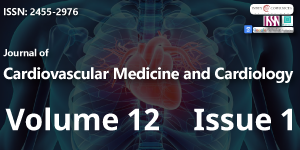Catalytically Inactive SHP1-C453S Mutant Gain of “Robust LLPS” Function
Main Article Content
Abstract
Abstract
SHP1 is a non-receptor protein tyrosine phosphatase extensively expressed in hematopoietic cells, exerting a pivotal role as an immunosuppressive factor. Our previous studies have suggested that SHP1 can undergo liquid-liquid phase separation (LLPS). In this study, the SHP1-C455S mutant, commonly utilized in biochemical assays due to its lack of catalytic phosphatase activity, unexpectedly exhibited a remarkably robust ability for LLPS. Since the C453S mutation has been previously shown to potentially induce a conformational transition of SHP1 from a closed to an open state, we hypothesize that the enhanced LLPS capability of SHP1 may be facilitated by this conformational alteration. The SHP1-C453S mutant exhibited robust LLPS activity, while completely abrogating its phosphatase activity.
This allows for effective investigation of the catalytic activity and LLPS capability of SHP1.
Downloads
Article Details
Copyright (c) 2025 Zhang Q, et al.

This work is licensed under a Creative Commons Attribution 4.0 International License.
Licensing and protecting the author rights is the central aim and core of the publishing business. Peertechz dedicates itself in making it easier for people to share and build upon the work of others while maintaining consistency with the rules of copyright. Peertechz licensing terms are formulated to facilitate reuse of the manuscripts published in journals to take maximum advantage of Open Access publication and for the purpose of disseminating knowledge.
We support 'libre' open access, which defines Open Access in true terms as free of charge online access along with usage rights. The usage rights are granted through the use of specific Creative Commons license.
Peertechz accomplice with- [CC BY 4.0]
Explanation
'CC' stands for Creative Commons license. 'BY' symbolizes that users have provided attribution to the creator that the published manuscripts can be used or shared. This license allows for redistribution, commercial and non-commercial, as long as it is passed along unchanged and in whole, with credit to the author.
Please take in notification that Creative Commons user licenses are non-revocable. We recommend authors to check if their funding body requires a specific license.
With this license, the authors are allowed that after publishing with Peertechz, they can share their research by posting a free draft copy of their article to any repository or website.
'CC BY' license observance:
|
License Name |
Permission to read and download |
Permission to display in a repository |
Permission to translate |
Commercial uses of manuscript |
|
CC BY 4.0 |
Yes |
Yes |
Yes |
Yes |
The authors please note that Creative Commons license is focused on making creative works available for discovery and reuse. Creative Commons licenses provide an alternative to standard copyrights, allowing authors to specify ways that their works can be used without having to grant permission for each individual request. Others who want to reserve all of their rights under copyright law should not use CC licenses.
Matthews RJ, Bowne DB, Flores E, Thomas ML. Characterization of hematopoietic intracellular protein tyrosine phosphatases: description of a phosphatase containing an SH2 domain and another enriched in proline-, glutamic acid-, serine-, and threonine-rich sequences. Mol Cell Biol. 1992;12(5):2396-2405. Available from: https://doi.org/10.1128/mcb.12.5.2396-2405.1992
Yi TL, Cleveland JL, Ihle JN. Protein tyrosine phosphatase containing SH2 domains: characterization, preferential expression in hematopoietic cells, and localization to human chromosome 12p12-p13. Mol Cell Biol. 1992;12(2):836-846. Available from: https://doi.org/10.1128/mcb.12.2.836-846.1992
Tsui FWL, Martin A, Wang J, Tsui HW. Investigations into the regulation and function of the SH2 domain-containing protein-tyrosine phosphatase, SHP-1. Immunol Res. 2006;35(1-2):127-136. Available from: https://doi.org/10.1385/ir:35:1:127
Garg M, Wahid M, Khan F. Regulation of peripheral and central immunity: understanding the role of Src homology 2 domain-containing tyrosine phosphatases, SHP-1 & SHP-2. Immunobiology. 2020;225(1):151847. Available from: https://doi.org/10.1016/j.imbio.2019.09.006
Abram CL, Lowell CA. Shp1 function in myeloid cells. J Leukoc Biol. 2017;102(3):657-675. Available from: https://doi.org/10.1189/jlb.2mr0317-105r
Mehta S, Zhang J. Liquid-liquid phase separation drives cellular function and dysfunction in cancer. Nat Rev Cancer. 2022;22(4):239-252. Available from: https://doi.org/10.1038/s41568-022-00444-7
Hirose T, Ninomiya K, Nakagawa S, Yamazaki T. A guide to membraneless organelles and their various roles in gene regulation. Nat Rev Mol Cell Biol. 2023;24(4):288-304. Available from: https://doi.org/10.1038/s41580-022-00558-8
Alberti S, Gladfelter A, Mittag T. Considerations and challenges in studying liquid-liquid phase separation and biomolecular condensates. Cell. 2019;176(3):419-434. Available from: https://doi.org/10.1016/j.cell.2018.12.035
Banani SF, Lee HO, Hyman AA, Rosen MK. Biomolecular condensates: organizers of cellular biochemistry. Nat Rev Mol Cell Biol. 2017;18(5):285-298. Available from: https://doi.org/10.1038/nrm.2017.7
Zhang Q, Kong W, Zhu T, Zhu G, Zhu J, Kong X, et al. Phase separation ability and phosphatase activity of the SHP1-R360E mutant. Biochem Biophys Res Commun. 2022;600:150-155. Available from: https://doi.org/10.1016/j.bbrc.2022.02.070
Lin S, Raval S, Zhang Z, Deverill M, Siminovitch KA, Branch DR, et al. The protein-tyrosine phosphatase SHP-1 regulates the phosphorylation of alpha-actinin. J Biol Chem. 2004;279(24):25755-25764. Available from: https://doi.org/10.1074/jbc.m314175200
Dustin L, Plas D, Wong J, Hu YT, Soto C, Chan AC, et al. Expression of dominant-negative src-homology domain 2-containing protein tyrosine phosphatase-1 results in increased Syk tyrosine kinase activity and B cell activation. J Immunol (Baltimore, Md: 1950). 1999;162(5):2717-2724. Available from: https://pubmed.ncbi.nlm.nih.gov/10072516/
Sha F, Kurosawa K, Glasser E, Ketavarapu G, Albazzaz S, Koide A, et al. Monobody inhibitor selective to the phosphatase domain of SHP2 and its use as a probe for quantifying SHP2 allosteric regulation. J Mol Biol. 2023;435(8):168010. Available from: https://doi.org/10.1016/j.jmb.2023.168010
Zhu G, Xie J, Kong W, Xie J, Li Y, Du L, et al. Phase separation of disease-associated SHP2 mutants underlies MAPK hyperactivation. Cell. 2020;183(2):490-502.e18. Available from: https://doi.org/10.1016/j.cell.2020.09.002
Yang J, Liu L, He D, Song X, Liang X, Zhao ZJ, et al. Crystal structure of human protein-tyrosine phosphatase SHP-1. J Biol Chem. 2003;278(8):6516-6520. Available from: https://doi.org/10.1074/jbc.m210430200
Wang W, Liu L, Song X, Mo Y, Komma C, Bellamy HD, et al. Crystal structure of human protein tyrosine phosphatase SHP-1 in the open conformation. J Cell Biochem. 2011;112(8):2062-2071. Available from: https://doi.org/10.1002/jcb.23125
Tamura A, Ito G, Matsuda H, Nibe-Shirakihara Y, Hiraoka Y, Kitagawa S, et al. Zranb1-mutant mice display abnormal colonic mucus production and exacerbation of DSS-induced colitis. Biochem Biophys Res Commun. 2022;628:147-154. Available from: https://doi.org/10.1016/j.bbrc.2022.08.046

